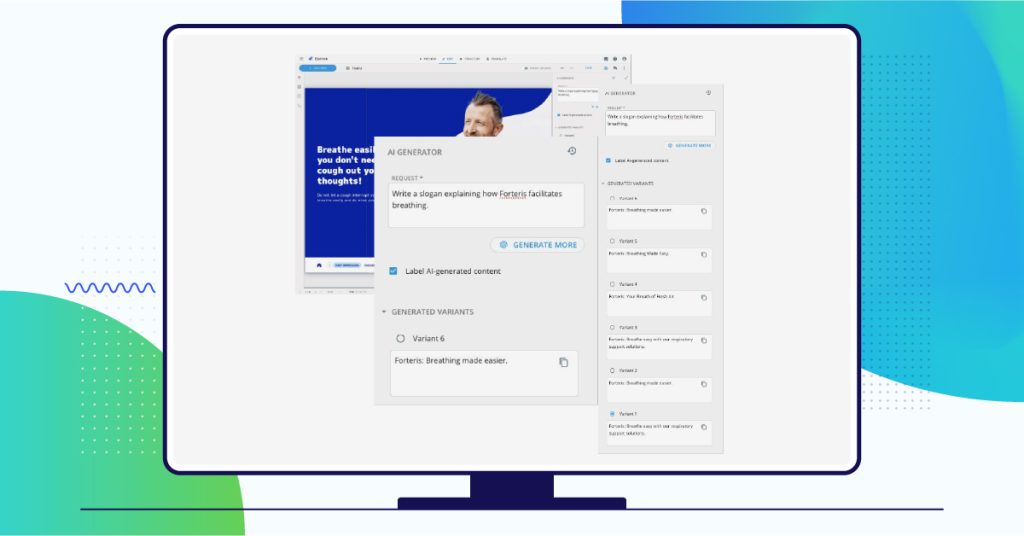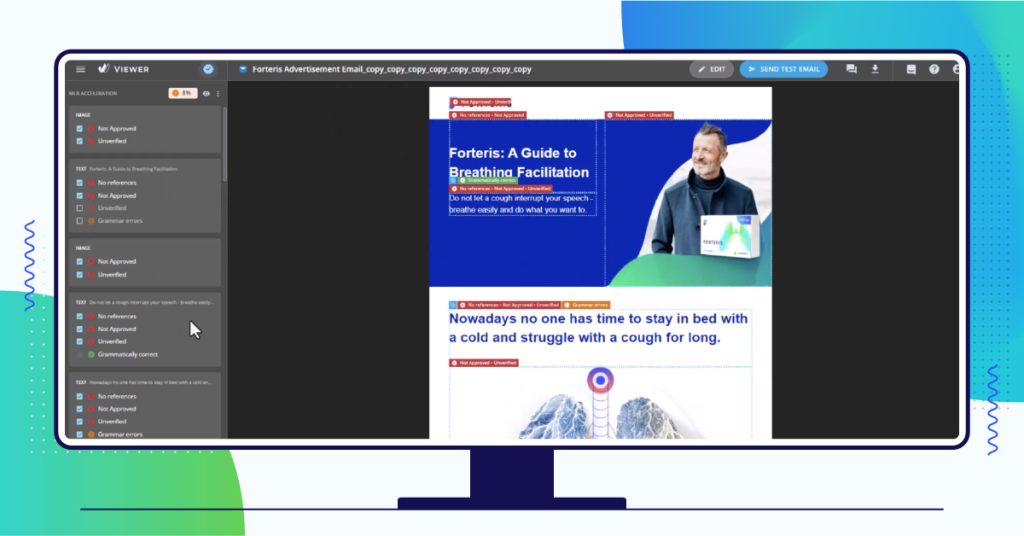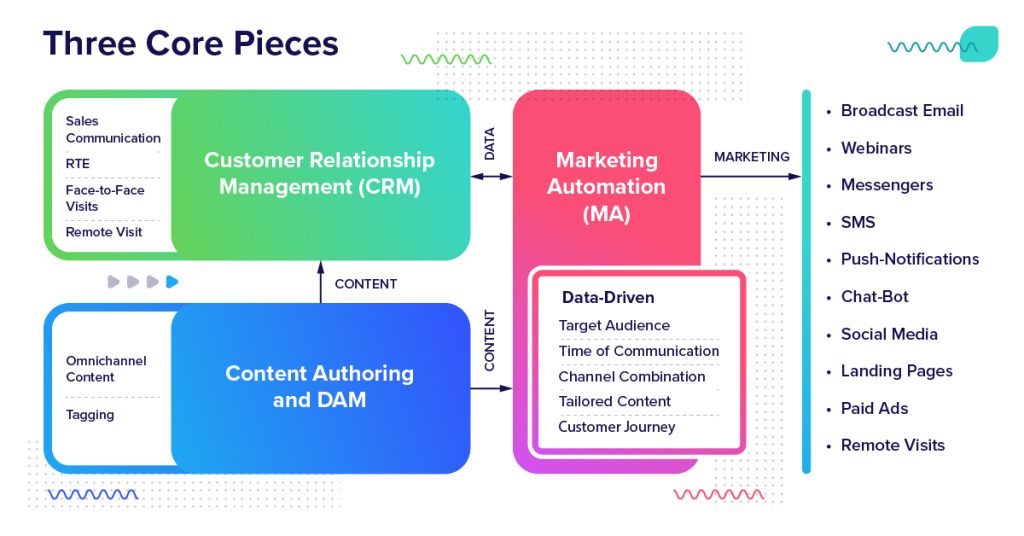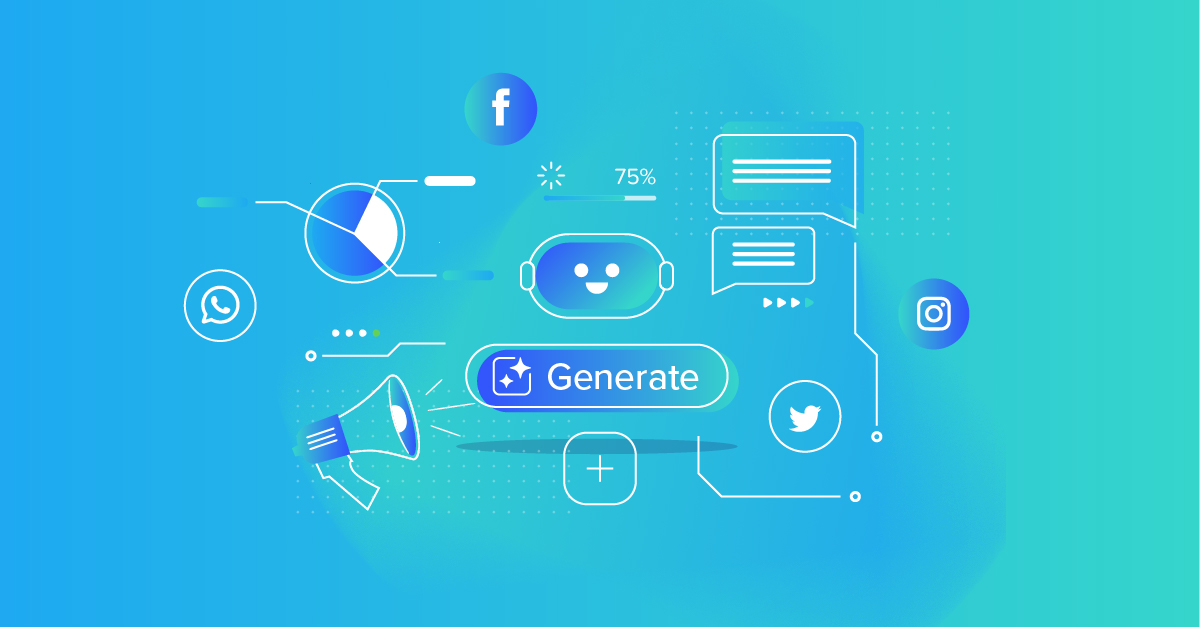Can people desire what they already have? While it might seem like a philosophical question, it is highly relevant to modern marketing and customer psychology. Living up to consumer expectations is no longer enough. Brands must exceed those expectations and offer experiences that are faster, more convenient, and highly personalized.
Tailored marketing boosts sales by at least 10% and drives return on investment (ROI) up to eight times higher. AI marketing tools help make that happen, letting businesses personalize at scale while trimming costs.
But even though marketers are excited about AI marketing, putting this technology into practice is easier said than done. In this article, the Viseven team will cover AI’s use cases, challenges, and the best implementation strategies for pharma market players.
How Can You, as a Pharma Marketer, Harness AI?
Marketers can use AI in almost every part of their work. While technology will not fully replace their role, it can boost the effectiveness of personalized strategies and campaigns while cutting down time-to-market. This list is not exhaustive, but it covers the core use cases:
Content generation
Generative AI has created a lot of buzz and excitement and for good reason. Marketers can now leverage artificial intelligence to brainstorm content ideas, draft copy, and make edits in record time.
But here’s the problem: in pharma marketing, you cannot rely on artificial intelligence tools like ChatGPT that connect to the open web. First, it raises security concerns. Second, it compromises content quality –– something that is non-negotiable in highly regulated industries like life sciences.
Our pharma clients use a secure, isolated large language model (LLM) tailored to follow specific rules and settings for creating new content assets. These custom settings shape the output’s style and tone, filter out unwanted features, and incorporate specialized vocabularies. This way, clients get high-quality content without jeopardizing data security.

eWizard content creation engine
Customer segmentation
Businesses that understand their customers are the ones that end up winning the race. AI marketing tools help them shed a big light on the target audience, like what drives them, what keeps them up at night, and things that encourage purchase behavior. Segmentation becomes pinpoint accurate, and targeting becomes more precise than ever.
For pharma brands, AI marketing is not just about knowing who your customers are today. It is about forecasting financial opportunities for each audience segment, so brands can laser-focus on customers whose loyalty will boost the ROI most.
Real-time content personalization
Content personalization is not just about adding customers’ names or adjusting for cultural nuances in AI translations. It is about knowing their stories. Technology helps us identify exactly what HCPs or patients need and deliver messages that drive messages closer home.
This process, however, is much more intricate in pharma marketing. Every piece of marketing content has to go through a medical, legal, and regulatory (MLR) review before it goes live.
Creating personalized content on the fly means there is a lot of preparation work to do first. More specifically, you will need to set up a library of pre-approved modules and assets, so you can mix and match them to create those tailored experiences.
Data organization
Speaking of content libraries, you will need artificial intelligence to manage all that data. The goal is to make it easy to find pre-approved modules and assets that align with your customers’ needs and behaviors.
AI marketing tools can help pharma marketers automatically add both contextual and company-specific strategic tags. In our experience, this approach has proven to be 10 times more cost-efficient and 100 times faster than manual tagging.
Data analytics
In organizations that take data seriously, every marketer is a business analyst. This means that even those without analytics expertise can understand AI-generated dashboards and reports and make decisions based on evidence rather than assumptions.
Clear, easy-to-understand visualizations help marketers share insights with stakeholders at all levels. More specifically, visuals help them “sell” their marketing ideas and campaigns to the C-suite and make decisions faster.
Besides, AI-driven analytics centralizes and standardizes data into a single source of truth. This gives marketers quick access to the information they need, exactly when they need it.
Tunable translations
Advanced AI models let marketers produce accurate, context-sensitive translations, speeding up localization. Users can set specific rules to ensure translations align with brand guidelines and maintain the desired tone.
Marketers can manually make changes if translations seem off, and thanks to machine learning (ML), the system learns from these corrections and improves over time.
Regulatory compliance in translation is an important consideration for pharma companies. Some tools include built-in support to help meet requirements such as the FDA’s standards or the GDPR.
MLR acceleration
Let’s talk about MLR, a major bottleneck to achieving fast time-to-market. What you should be aiming for is to get asset approval on the first try. If you do not, you are back to square one: rewriting briefs, reviewing updates, resubmitting for approval, and potentially adding up to two months of delays.
AI-powered solutions can review your content before it goes for formal MLR approval, so you minimize your chances for revision requests. For example, you can set an acceptable threshold in eWizard, our content experience platform.
Let’s say you decide that content scoring 93% or higher is ready for approval. Anything below that will be flagged in orange, signaling it needs further attention.

eWizard MLR Acceleration engine
In eWizard, content is checked against various rules, such as references, approval status, source verification, grammar, and modifications. The system ensures that content is supported by references, globally or locally approved, sourced from reliable channels, free of grammar errors, and unchanged. If any issues are detected, the system provides suggestions to address them.
Key Barriers to AI-Driven Marketing
Statista’s numbers paint a bleak picture: only 2% of life sciences companies have adopted AI for marketing and sales. Like any digital transformation effort, AI marketing tool adoption faces major challenges, leaving many brands reluctant to jump through the hoops. Let’s enlist the most common barriers in this journey:
Lack of data sharing between systems
Many organizations focus on data collection and obtaining healthcare providers’ digital consent but forget about system interoperability. When systems do not communicate well, information silos arise –– an issue that worsens as data piles up. This limits the effectiveness of marketing analytics and makes it harder to deliver highly personalized and successful marketing campaigns.
As a rule of thumb, success of AI-related initiatives hinges on the quality of your input. To avoid a ‘garbage in, garbage out’ situation, concentrate on collecting, cleaning, and unifying your data. This approach enables you to build clear buyer personas, segment your audience, come up with effective positioning, and truly “see” customer behaviors and needs.
Fragmented channels
Today, consumers have the freedom to explore and engage with brands in so many ways. But marketers face a tricky job –– they need to tackle a fragmented network of different channels to reach their audience.
Digital channels tend to run separately from MedReps, creating silos. Pharma brands have to connect the dots between the physical and digital to get the most out of their AI marketing strategy.
IT and marketing teams misaligned
When it comes to choosing tech solutions, marketers are far from being last in line. In fact, Deloitte reports that 72% of marketers are either executive approvers or primary decision-makers.
This makes sense from a marketing standpoint, as they are the end users of data assets. Marketers rely on these solutions to understand their audience and deliver personalized customer experience.
On the IT side, there is a strong drive to lead AI initiatives, given their responsibility for security and data governance. While tech teams often know which solutions best fit the company’s infrastructure, they can struggle to align those tools with business needs and objectives.
Often, digital marketing and tech teams cannot agree on the primary goals of AI in marketing. This disconnect leaves them working in isolation.
Best practices for your AI project
Now, you might be asking, ‘How do I connect everything –– systems, channels, and teams?’ We have created a short guide to help you sort this out before adding AI into your workflow. Here is what you should consider:
Build a marketing ecosystem
As straightforward as this might sound, achieving interoperability means having a comprehensive ecosystem of marketing solutions. These are the main AI marketing tools you will need:
Tool 1: Customer relationship management (CRM) system
Your ecosystem needs integrated CRM software to store all customer data. A robust CRM helps pharma brands build a timeline of HCP visits and determine the right message to deliver at the right time. It enables better face-to-face visit planning and helps you tailor each interaction to real-time consumer needs and behaviors.
A CRM is crucial for communication. It enables marketers, medical representatives, and other stakeholders to stay on the same page and share relevant insights, creating more personalized and cohesive customer experience.
Tool 2: Marketing automation platform
Next, you need a marketing automation platform to execute your omnichannel digital marketing campaigns. You might be wondering, ‘Why is not a CRM enough for a successful AI project?’ A CRM primarily focuses on data, while a marketing automation platform is designed to drive engagement. Plus, as your project grows, it becomes increasingly challenging to manually manage and tailor digital marketing efforts using just a CRM.
A marketing automation platform allows you to streamline tasks like email campaigns, lead nurturing, and personalized content delivery, all while integrating and managing your channels in one centralized system.
Tool 3: Content experience platform
As the name suggests, this platform transforms your experience in content planning, production, and delivery. With eWizard, for example, users can leverage AI-powered features like content generation, auto-tagging, translation, and MLR acceleration.
On top of that, they can create AI video avatars to elevate their presentations. All it takes is entering the text, selecting an avatar, choosing a language and voice sample –– and just like that, you get an avatar delivering your message with natural body language and expressions.

AI-driven marketing ecosystem
Decide on your MedRep’s role
Now, it is time to unify all your channels. Yes, you have a digital marketing automation system, but you need a clear vision to fully leverage this technology.
You can make your MedRep the central channel that orchestrates all others. This approach allows you to invest in building deep connections with HCPs through face-to-face visits, making communication more personalized.
Another strategy is to position your MedRep as one of several channels. One of the biggest advantages here is that you will not be dependent on personal relationships between MedReps and HCPs. Also, you trim costs, as you no longer need to support a big MedRep team.
Get help from a MarTech vendor
To connect your business and tech teams, you might need some external help. A reliable MarTech partner will bring the technical expertise you need while also understanding your business requirements.
They will support you through the toughest parts of your project –– helping you set goals, make the most of your data, integrate AI marketing tools, and handle data transfers. Most importantly, they will assign clear ownership of tasks, which boosts accountability and improves productivity.
Stepping into Your AI Era
Every marketer dreams of earning customer loyalty without exhausting the company’s resources or inflating costs. One way to achieve this is by using AI-powered marketing tools.
Yet, adopting AI is not always smooth sailing. Disconnected systems, teams, and channels can turn the journey into an uphill battle. To overcome these challenges, focus on creating an efficient ecosystem, defining the MedReps’ role in channel orchestration, and seek expert guidance from a MarTech vendor to align your AI marketing teams for success.
At Viseven, we have spent over 15 years driving digital transformation in pharma and life sciences. Our AI-powered content experience platform, eWizard, is just one part of what we offer. We also guide our clients in choosing the right AI solutions and building smart marketing strategies tailored to their needs.
Do you have questions about AI marketing? Drop us a line –– we are here to help.
